Operators
 United States
United States
| XCO-2 | |
|---|---|
| Role | Biplane Observation aircraft |
| National origin | United States |
| Manufacturer | Engineering Division |
| Designer | Jean A. Roche |
| First flight | 1922 |
| Status | prototype only |
| Number built | 1 |
The Engineering Division XCO-2 was an observation aircraft designed at the United States Army Air Corps Engineering Division.
The XCO-2 was a conventional biplane with four machine guns and a Liberty 12 engine, as well as a fabric covering. The prototype flew in 1922 but crashing during flight tests.
Data from [1]
General characteristics
Performance
Related lists
The Alliant RQ-6 Outrider unmanned aerial vehicle (UAV) was designed to provide near-real-time reconnaissance, surveillance, and target acquisition information to United States Marine Corps air/ground task forces, United States Army brigades, and deployed United States Navy units that was small enough for an entire system to be contained on two Humvees and trailer and transported on a single C-130 Hercules cargo aircraft.

The Curtiss A-8 was a low-wing monoplane ground-attack aircraft built by the United States company Curtiss Aeroplane and Motor Company, designed in response to a 1929 United States Army Air Corps requirement for an attack aircraft to replace the A-3 Falcon. The Model 59 "Shrike" was designated XA-8.
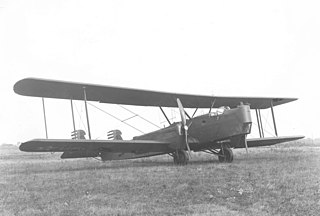
The Huff-Daland XB-1 was a prototype bomber aircraft built for the United States Army Air Corps.

The Keystone B-4 was a biplane bomber, built by the Keystone Aircraft company for the United States Army Air Corps.

The Keystone B-5 is a light bomber made by the Keystone Aircraft company for the United States Army Air Corps in the early 1930s. The B-5A was a Keystone B-3A with Wright Cyclone rather than Pratt & Whitney engines.
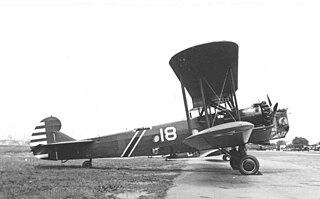
The Keystone B-6 was a biplane bomber developed by the Keystone Aircraft company for the United States Army Air Corps.

The Northrop C-19 Alpha was a series of three aircraft purchased from Northrop by the US Army Air Corps in 1931. They were slightly modified versions of the civil Northrop Alpha Type 2.
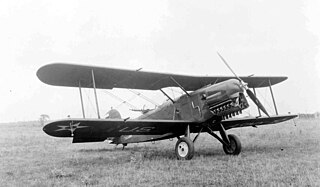
The Douglas XA-2 was an American prototype attack aircraft converted from a Douglas O-2 observation aircraft in the spring of 1926 by Douglas Aircraft. Only one prototype aircraft was built and the type was not ordered into production.
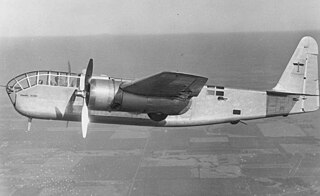
The Stearman XA-21 was a competitor in a United States Army Air Corps competition for a twin-engined attack aircraft which led to the Douglas A-20 Havoc, Martin A-22 Maryland and North American B-25 Mitchell.
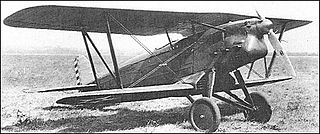
The Boeing XP-8 was a prototype American biplane fighter of the 1920s, notable for its unusual design incorporating the engine radiator into the lower wing.

The Douglas C-1 was a cargo/transport aircraft produced by the Douglas Aircraft Corporation for the United States Army Air Service starting in 1925.

The Consolidated Model 2 was a training airplane used by the United States Army Air Corps, under the designation PT-3 and the United States Navy under the designation NY-1.
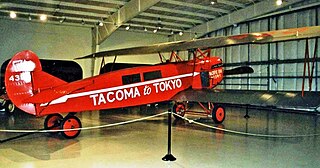
The Fokker C.IV was a 1920s Dutch two-seat reconnaissance aircraft designed and built by Fokker.

The Martin MB-1 was an American large biplane bomber designed and built by the Glenn L. Martin Company for the United States Army Air Service in 1918. It was the first purpose-built bomber produced by the United States.
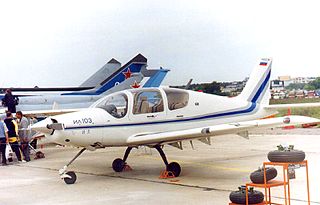
The Ilyushin Il-103 is a single-engine, low-wing training aircraft developed by the Ilyushin Design Bureau that started in 1990 in the Soviet Union. The aircraft is now produced in Russia. It was the first Russian aircraft to achieve Federal Aviation Administration certification, in 1998, for sales in the United States.
The Boeing Model 42 was an American biplane aircraft developed from the Airco DH.4, taking advantage of the large number of aircraft left over after the end of World War I.
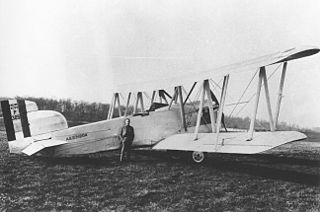
The Engineering Division TP-1 was a two-seat biplane fighter designed by Alfred V. Verville and Virginius E. Clark at the United States Army Air Corps Engineering Division. A second aircraft was completed as an observation biplane and designated the Engineering Division XCO-5.

The Mohawk M1C was a 1920s American two or three-seat low-wing monoplane designed and built by Mohawk Aero Corporation of Minneapolis, Minnesota. One M1C was evaluated by the United States Army Air Corps in 1930 as the YPT-7 Pinto for use as a primary trainer.
The Keystone XO-15 was an American prototype observation aircraft, built by the Keystone Aircraft Corporation for the United States Army Air Corps, First flown in 1930, only a single prototype was built.
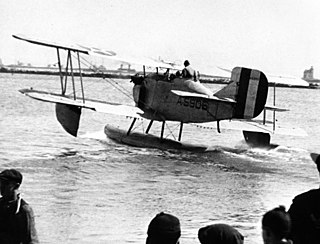
G Elias & Brother was and American manufacturer of cabinets and aircraft based in Buffalo, New York in the 1920s. A.G. Elias sat on the Manufacturers Aircraft Association's board of directors along with President Frank H. Russell, VP Glenn L. Martin, Charles L. Laurence, Chance M. Vought, S.S. Bradley, George P. Tidmarsh, and Donald Douglas. E.J Elias promoted the construction of a Buffalo municipal airport to aid the local fledgling airplane industry of five aviation companies constructing airplanes and airplane parts. From 1920 to 1925, Elias company's chief engineer, David Earle Dunlap (1896-1957), designed the Elias EM-2 Expeditionary planes. He designed the NBS-3 bomber fuselage and the Elias M-1 Mail plane. Dunlap's Elias TA-1 design was the first United States Army Air Corps Trainer to have a radial engine. After tests a McCook Field, the Army Air Corps selected other manufacturers over the Elias bomber and trainer. The company designed the Elias EM-1 to meet requirements for a multirole amphibian marine expeditionary aircraft. Elias delivered six production Elias EM-2 aircraft with Liberty engines to the United States Navy in 1922.